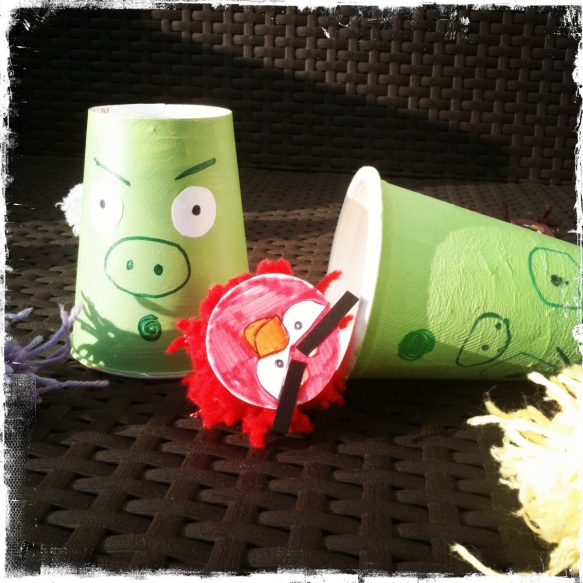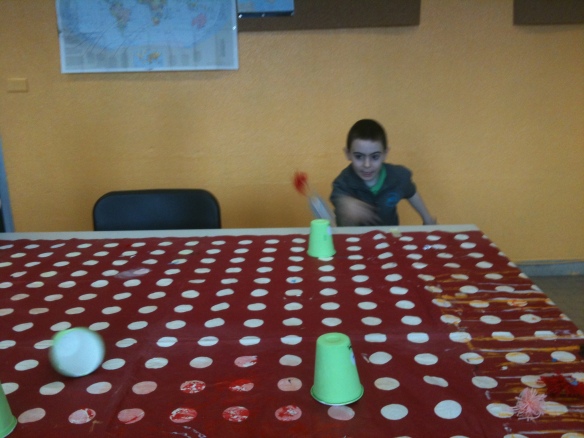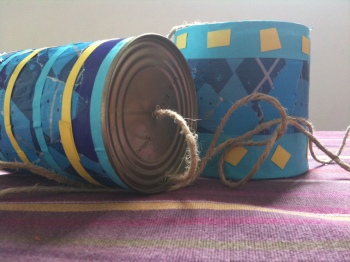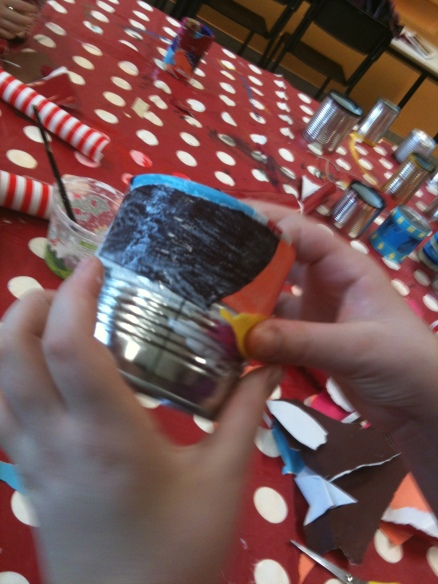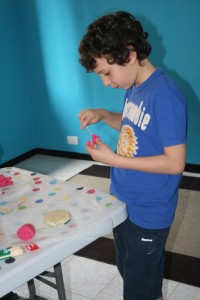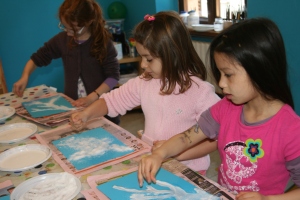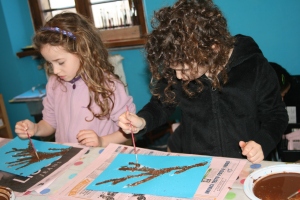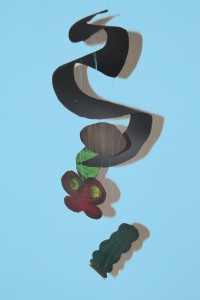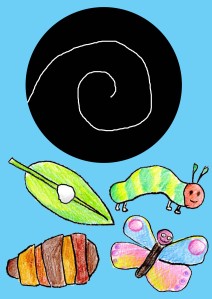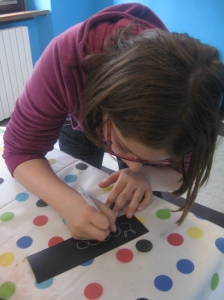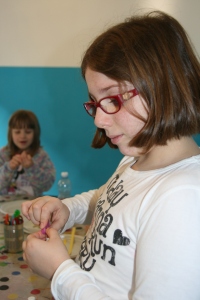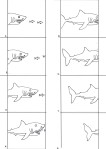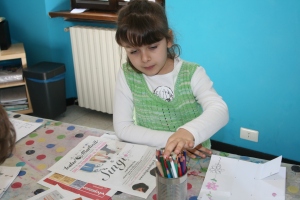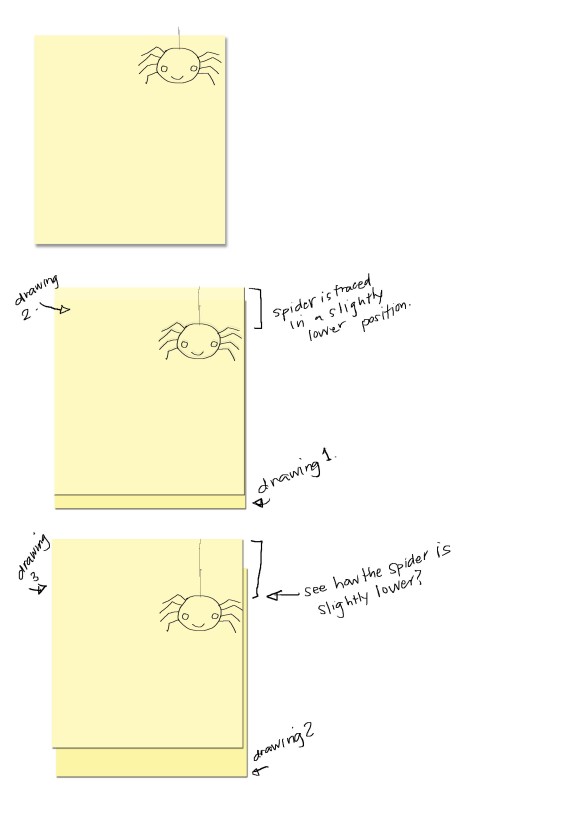Angry Birds is a fun – but the downside is only one person can play at a time and if your mom says no more electronic devices, well then -you can’t play at all! We have just the solution for these types of situations – it’s Analog Angry Birds – all the fun and no electricity! In fact, we don’t know if the kids had more fun making the game or playing it!
Here’s what you will need:
- several different colors of yarn (the birds are white, blue, black, yellow and red – you can use the same colors or get crazy and use the colors you have!)
- scissors
- paper
- glue
- colored pens
- milk top (to trace circle)
- 5 paper cups
- green tempera paint
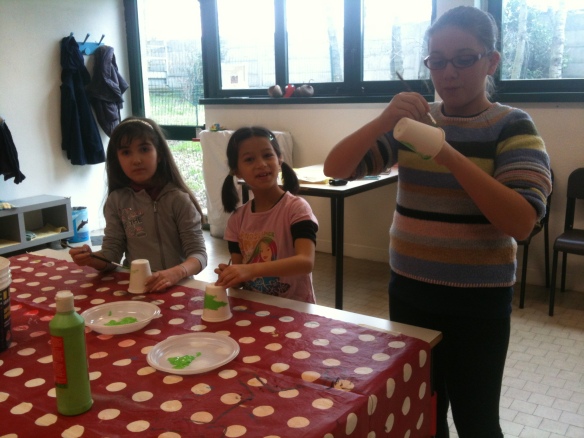 1) The first thing you will need to do is to paint your cups green.
1) The first thing you will need to do is to paint your cups green.
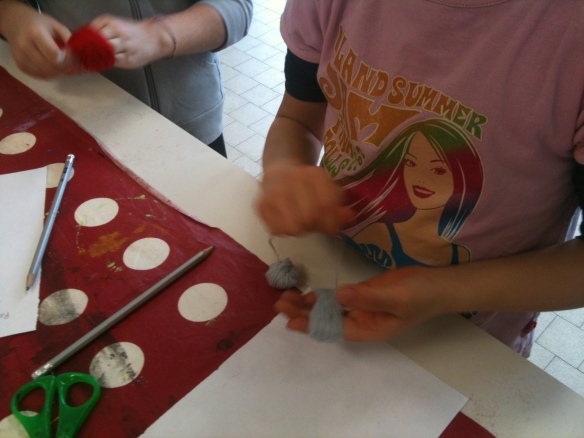 2) While the paint is drying, start making your birds. Wrap the yarn around your four fingers (use your thumb to hold the end of the yarn when you start). You will need to wrap several times – for the really thin yarn we went anywhere from 75 to 100 times, with the thicker yarn we wrapped about 30 times. This was a good fine motor skill and a great way to get the kids counting.
2) While the paint is drying, start making your birds. Wrap the yarn around your four fingers (use your thumb to hold the end of the yarn when you start). You will need to wrap several times – for the really thin yarn we went anywhere from 75 to 100 times, with the thicker yarn we wrapped about 30 times. This was a good fine motor skill and a great way to get the kids counting.
- -Not all of the kids can count past 10, so we counted to 10 and then put a tick mark to remember how many times we went around.
- -The more times you go around your hand, the fuller your pompom will be.
- – Be sure not to wrap too tightly or you will hurt your hand and have a hard time sliding the yarn off.
Once you are finished wrapping, cut off the end and slide the yarn off your hand. Tie another small strand of yarn around the center to hold the pompom together. Cut each loop and then roll the pompom around in your hand to fluff it up a bit.
3) Use the milk bottle top to trace a circle and then draw your Angry Bird’s face (we know what you are thinking – “hey, this could be a great lesson to do emotions”- good idea! we thought so too! you can make some happy, sad, silly etc). Glue the face onto your pompom.
4) Once your cup is dry, draw on a pig’s face.
Thanks to make and takes for this funtastic idea!

